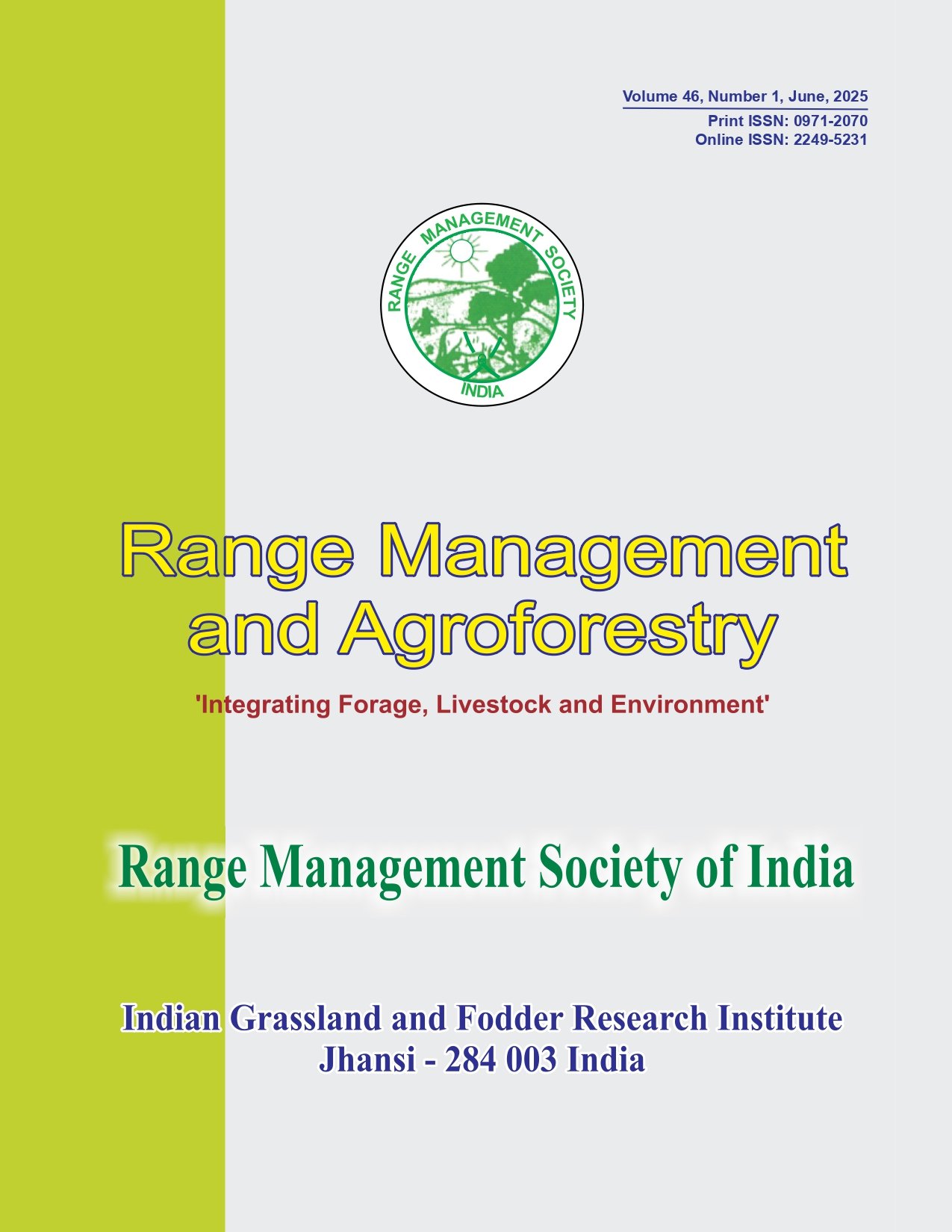Effect of date of sowing and weather factors on infestation of Atherigona soccata (Rondani) and yield parameters of forage sorghum
Keywords:
Atherigona soccata, Correlation, Dead heart, Green fodder yield, Oviposition, SorghumAbstract
Ecofriendly strategies for the management of sorghum shoot fly, Atherigona soccata helps in addressing the issues related to insecticides load on forage crop. The present study was carried out to know the suitable date of sowing on damage indices of sorghum shoot fly and green fodder yield in sorghum. The staggered sowing technique at a different time intervals was used, starting from 2nd fortnight of March (12th SMW) to 1st fortnight of July (27th SMW). Oviposition in terms of eggs per 10 plants and dead heart percentage was recorded to be low in 18th SMW (1st fortnight of May) sown crop (eggs: 6.66 and dead heart: 25.46%), but it was found to be highest in 1st fortnight of July (27th SMW) sown crop (eggs: 21.95 and dead heart: 65.45%). The correlation of shoot fly infestation in relation to weather parameters revealed that egg load and dead hearts were negatively correlated with maximum temperature and positively correlated with minimum temperature, relative humidity and rain fall. Green fodder yield was recorded to be highest and lowest for the crop sown on 18th SMW (409 q/ha) and 27th SMW (302 q/ha), respectively. The study indicated that 1st fortnight of May was the best time to escape from the sorghum shoot fly attack.




